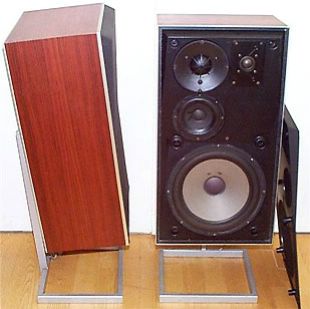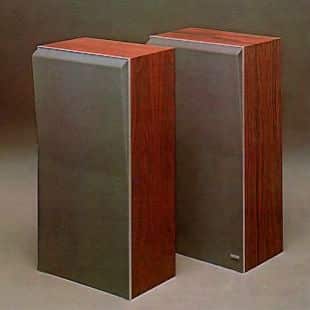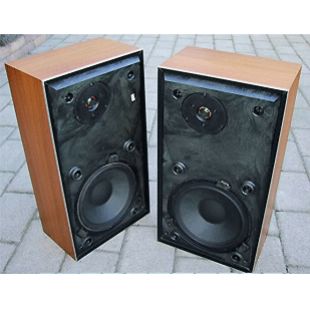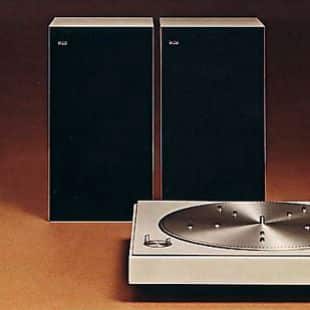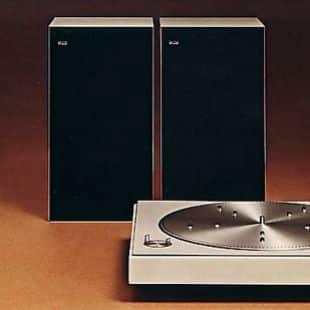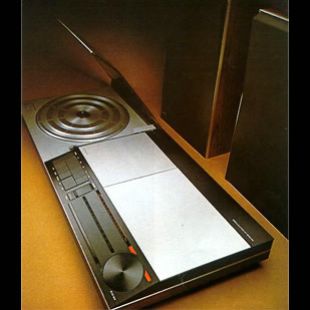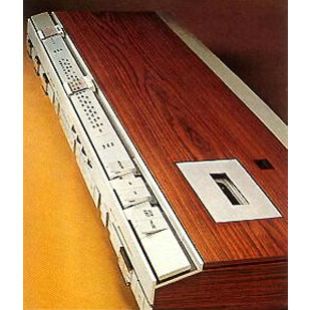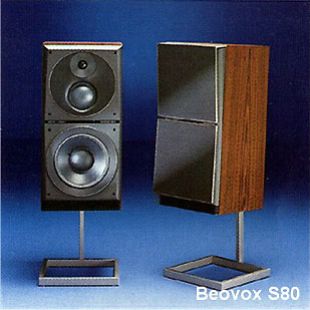BeoCenter 7700
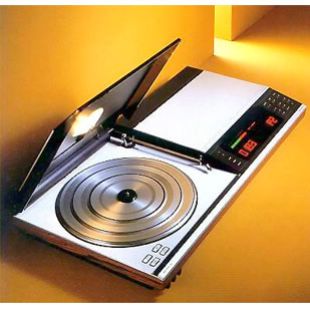
In 1982, Bang & Olufsen introduced a completely new way of living with music. The company was then the only one in the world to fulfil the desire for perfect sound from attic to basement – from just the one central music system.
With the Beolink® system – around which Beocenter 7700 was based – you could enjoy and control you music system in several rooms. From acorns great oak trees spring, and most of the the current (2002) range of TV and hi-fi systems can be equally controlled to give you ’round the house music’ using the latest MasterLink system.
The very advanced (for its time) Beocenter 7700 system brought an entirely new range of possibilities to the serious music-lover. For the very first time ever, round-the-house hi-fi became an option, in whichever room you wanted to listen to it.
Beocenter 7700 featured Long, Medium and FM radio, automatic record deck, microcomputer controlled cassette recording and 2 x 40 watts RMS stereo amplifier. Two user-programmable 24-hour timers were included, and all sound sources are accessible by infra-red remote control.
From this comprehensive and desirable foundation, it was possible to build up (either immediately, or room by room) a sound system that could be enjoyed and operated from anywhere in the house ( a forerunner to the later Beolink® system).
This is how it worked.
The remote Terminal (Master Control panel) supplied with the Beocenter 7700 had control buttons for armchair access to all primary playing and recording functions.
But in addition, it also had three digital read-out panels on which your instructions were confirmed every time you pressed a button. So you had your means of “talking to” your Beocenter 7700, and it had a means of “talking to” you – right there in your hand.
Your instructions were carried to the Beocenter’s microcomputer by infra-red light, and confirmatory signals were returned to the remote control Terminal in the same way – in a fraction of a second.
This two-way communication could be extended to other rooms by fitting those rooms with a pair of speakers and an electronic Master Control Link, all available as optional accessories. When you wanted to listen to music or radio in a room away from the Beocenter, the remote control Terminal was taken with you. By directing it at the Master Control link (which you had fixed on the wall or on a shelf) in just the same way as you would normally direct it towards the Beocenter, you could control all primary functions and receive confirmation that the Beocenter was doing what you want.
The Master Link equipment could be fitted in up to four different rooms, and you could choose which speakers were to play and which were to be silent. It was like having a complete, top-quality hi-fi system in every room, but paying for only one (plus as many loudspeakers and Master Links as you needed). You could, if you wished, buy additional remote control Terminals if you didn’t want to carry one around the house. But this was not strictly necessary.
Beocenter 7700 offered top quality sound from records, radio and cassettes. Operation was fast, easy and foolproof because of a built-in microcomputer which blocked mistakes, automating many boring, repetitive operations – like switching off one sound source before switching on another. Two timers, each with a 24-hour memory and automatic repeat function, allowed you to record or play any programme at specific times – day after day if you wished. The digital clock could be displayed or not – it was up to you.
You could pre-set 6 favourite FM radio stations, or 5 FM and one AM (Long or Medium wave) for instant press-button recall – either by direct or remote control.
The cassette section had many advanced features to make recording easier and more accurate. Replay, too – it was necessary just to key-in the appropriate counter reading and the cassette would fast wind to any point on the tape. It was as easy as finding a particular track on a record.
Metal, ferric and chrome tapes could be used, and the Dolby Noise Reduction circuits ensured clean, hiss-free sound.
The record deck was fitted with the (then) very latest type of tone arm and miniature MMC 3 cartridge. This pick-up carried a tiny naked elliptical diamond and weighed only 1.6 grams. It had superb tracking ability and ensured the minimum of record wear.
The safe handling of records was also the idea behind the turntable light – fitted inside the hinged lid – which switched on automatically whenever the lid was opened, and stayed alight as long as the deck was in operation.
Beocenter 7700 was available in natural teak or rosewood finish. It measured 72cm wide x 9.5cm high (37.5cm with the lid open) x 38cm deep and could be accommodated in either SC.50 or SC.70 System Cabinet, available separately.
Your choice of loudspeakers for use with Beocenter 7700 was really a matter of listening and comparing the various Beovox models. Different households had different requirements – in size, in quality and in cost. Fortunately, with the Beovox range the choice was a wide one. Advice on speakers for the Beocenter 7700 included Beovox C40, C75, S45, S55 and S80.
Beocenter 7700 was introduced as a completely new way of operating a hi-fi system. A way which gave individuals the freedom to enjoy top quality sound all over the house; at the same time to control the music from anywhere in any room.
This was the world’s first high fidelity system that could be operated from another room. With the Beocenter 7700’s master Control Panel and and optional Master Control Link, you could control radio, record deck, cassette recorder and stereo amplifier even though you were in the kitchen or bedroom and the set itself was in the lounge.
So when you want music in another room, don’t move the hi-fi – just move the music!
A Master Control Panel (above) was supplied with every Beocenter 7700. It was used just like an ordinary remote control handset when you were listening in the lounge, close to your hi-fi system. It let you operate all sound sources and adjust volume levels without moving from the comfortable armchair.
Master Control Link was an optional accessory, like the additional loudspeakers you needed in order to enjoy your music in other rooms. The Link equipment consisted of two units – a discreet black box containing a mass of sophisticated electronic circuitry (which could be fitted out of sight behind furniture etc.), and a transceiver unit that was placed on a shelf or wall where it could pick up the infra-red signals from your Master Control Panel. The transceiver unit also let you switch the speakers in this room on or off, and gave access to programmes that were due to be played via the Beocenter’s automatic timers.
You could buy extra stereo speakers and Master Control links for one, two or three additional rooms, as well as enjoying the hi-fi system itself which you probably installed in the living room or the lounge.
The Master Link equipment was connected by cable ‘in series’, i.e. only the first extra room is connected direct to the Beocenter; the second extra room was connected to the first and so on, so wiring was kept to a minimum. And you could add each room one by one – as your needs changed or your budget allowed.

